John Hurrell – 14 June, 2010
I don't think these works are tired or that Albrecht's powers of invention are exhausted. Not at all - their excellence and freshness is obvious. It is just that in getting to them, all the other series on the way with their abundant output have overloaded her audience with images, and she fails to surprise. Her marks, gestures, shapes and hues are too familiar now and she needs to reinvent herself in a startling manner. Something really fiercely unexpected. Something wildly ‘UnAlbrecht'.
With this show we see Gretchen Albrecht returning to the rectangle and its four straight edges of her beginnings. The horizontal oval paintings that came after the hemispheres I’ve always felt never worked because of the instability of their shape. Their pairs of internal straight lines never succeeded in counteracting that and inadvertently introduced an element of futile absurdity. Now, with the five oblong stretchers of this new show you see the severe and sharp edges of those curved stretchers replaced by soft, diaphanously splashy ones on the picture plane. And the proportions of the horizontal rectangular shape are elegantly trim and lean.
On each stretcher you see a central oval shape overlaid with filmy petal-like strokes that transform it to a flattened rose form containing a spiralling vortex. In that inner core Albrecht has dribbled pale underpainted slivers of bent, springy, wirelike line that introduce a tautness to the soft (often moody) scrubbed forms on top.
There are two sorts of stretcher here, the more ubiquitous pale canvas and the greyish-brown linen that brings a different tonal quality to the paintwork. And there are also two sorts of stained ‘rose’. One is dark, a seething inchoate tumbling mass that seems to be hovering at some distance from the viewer - if not moving away. The other is much airier, lighter, with more definition. It is less smokey, more translucent, less dense - and advancing towards the observer.
Albrecht’s conspicuous horizontal lines work well in both, providing a locking point for the eye to rest on before diving into the swirling tangle of chromatic veils. In Black Rose a thin white line slices across the sprawling and heaving cloudforms like Buñuel’s razor across the woman’s eye in his and Dali’s film Le Chien Andalou. Albrecht’s horizontal vector startles and sears because of its brightness against the churning brooding background, and then provides you with a platform - a springboard - from which to venture further. The second thicker line checks, stabilises and anchors you like a rail, locating your body back in the real architectural space of the gallery.
I like the splashy watery nature of the edges of these ‘roses’ and the (illusory) sense of abandoned control. They are a clear contrast to the earlier shaped stretchers. Yet as they hark back to her early stained work, and other later stages, they are still very characteristically ‘Albrecht’, and good as they are, she needs to radically reinvent her ‘brand’.
I don’t think these works are tired or that Albrecht’s powers of invention are exhausted. Not at all - their excellence and freshness is obvious. It is just that in getting to them, all the other series on the way (with their abundant output) have overloaded her audience with images, and she fails to surprise. Her marks, gestures, shapes and hues are too familiar now and she needs to reinvent herself in a startling manner. Something really fiercely unexpected. Something wildly ‘UnAlbrecht’.
John Hurrell
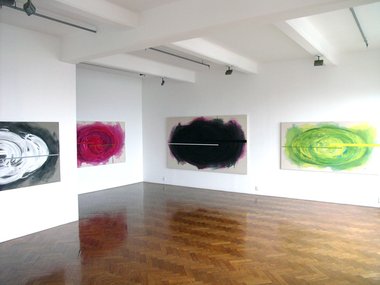
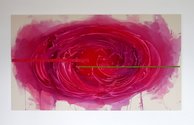
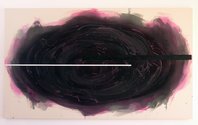
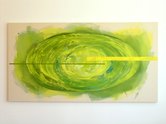

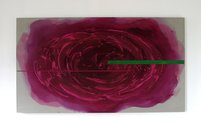
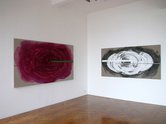
 Two Rooms presents a program of residencies and projects
Two Rooms presents a program of residencies and projects Advertising in this column
Advertising in this column



This Discussion has 0 comments.
Comment
Participate
Register to Participate.
Sign in
Sign in to an existing account.